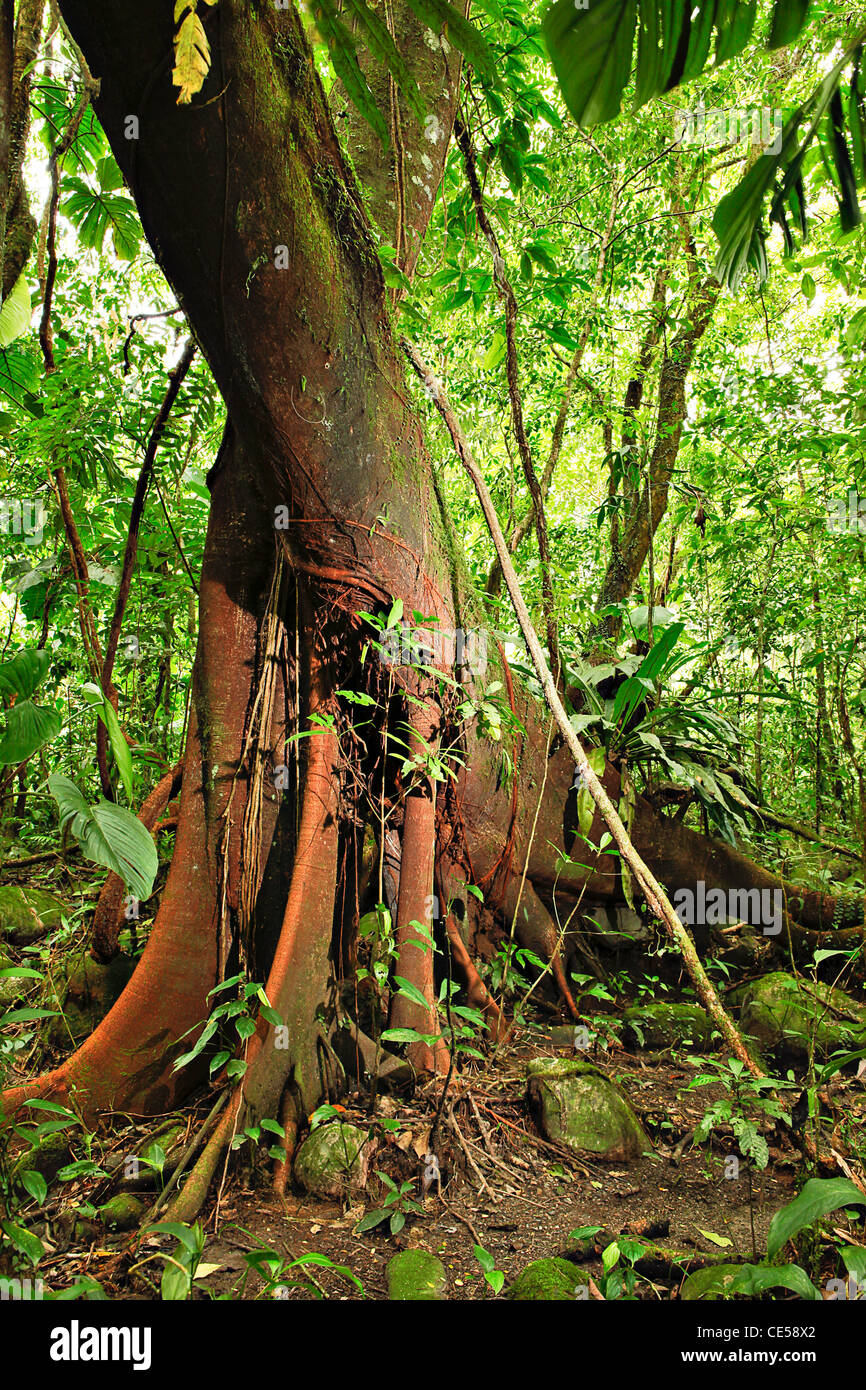Tropical Amazon Rainforest
Rainfall: The word “rainforest” implies that these are the some of the world’s wettest ecosystems. Rainforests generally receive very high rainfall each year, although the exact amount varies among different years and different rainforests.
For example, South America’s tropical rainforests receive between 200 and 300 centimeters (80 and 120 inches, or 6.5 to 10 feet!) of rain in a typical year. Despite relatively consistent rain in these ecosystems, there are distinct dry seasons in some rainforests. Wet and dry seasons of tropical rainforests vary in their timing, duration and severity around the globe. Tropical rainforests also have high humidity; about 88% during the wet season and approximately 77% in the dry season. Temperature: Tropical rainforests are found near the equator, between the Tropic of Cancer (23°27’N) and the Tropic of Capricorn (23°27’S). The equator receives direct sunlight.
This steady flow of radiation produces consistently high temperatures throughout the year. A typical daytime temperature any time of year in tropical rainforests is 29°C (85°F), although temperatures can be much higher.
Tropical Amazon Rainforest Mammals
In the majority of tropical rainforests, there is only a 5°C (9°F) difference in temperature between the seasons. Soil Composition: Since there is a tremendous amount and diversity of foliage in tropical rainforests, you might assume that rainforest soils are rich in nutrients. In fact, rainforest soils are nutrient-poor because nutrients are not stored in them for very long. The heavy rains that occur in rainforests wash organic material from the soil. Although decomposition occurs rapidly in the hot, moist conditions, many of the dead, fallen leaves and other organic detritus are swept away before releasing all of their nutrients. In addition, rainwater seeps into the ground and leaches away nutrients.


Nevertheless, the high diversity of decomposers, such as bacteria and fungi accelerates the decomposition process enough that the nutrients released by decomposition are taken up quickly by the plants, instead of being stored in the soil. Flowering plants must be pollinated in order to reproduce. During pollination, pollen is transferred from the male reproductive organs to the female reproductive organs in the flower to form seeds. Many tropical rainforest plants rely on animals as pollinators, and attract them with a combination of flashy color displays, alluring scents, and nutritious pollen rewards.
Plants also rely on animals or the wind to help disperse their seeds to new areas. This dispersal expands the distribution of the population. Many plants embed their seeds in tasty fruits.
The dispersers might carry the seeds stuck on their fur or feathers, they might carry the fruit away and drop the seeds while eating the fruit, or the seeds might pass through the digestive tract of the disperser after it eats the fruit. The species that carry out these important ecological roles are different in different tropical rainforests. Below are some examples from around the world. In Costa Rica’s tropical rainforest, the kapok tree is pollinated by bats and the seeds are dispersed by wind. In the Amazon Basin, the Brazil nut tree is pollinated by orchid bees and the seeds are dispersed by agoutis, a type of large rodent native to Central and South America.
Tropical Amazon Rainforest Temperatures
In Madagascar the traveler’s palm tree is pollinated by lemurs, which are small primates endemic to the island, and the seeds are dispersed by parrots. In Borneo, fig trees are pollinated by fig wasps, and the seeds are dispersed by orangutans, one of the large, great ape primates. Primates are iconic examples of tropical rainforests and of the diversity between different regional tropical rainforests. Primates are a group of animals that include humans, great apes, and monkeys. Central and South America has howler, spider, capuchin and squirrel monkeys, while Africa has vervet monkeys, baboons, chimpanzees and gorillas. Madagascar is the unique home of lemurs, and Asia has proboscis monkeys, macaque monkeys, langurs, gibbons and orangutans.
What this means is that saving one rainforest doesn’t save all the diversity represented by rainforests around the world. There is tremendous human pressure on rainforests all around the world because of slash-and-burn agriculture, mining, unsustainable timber harvesting, and the development of roads and cities.